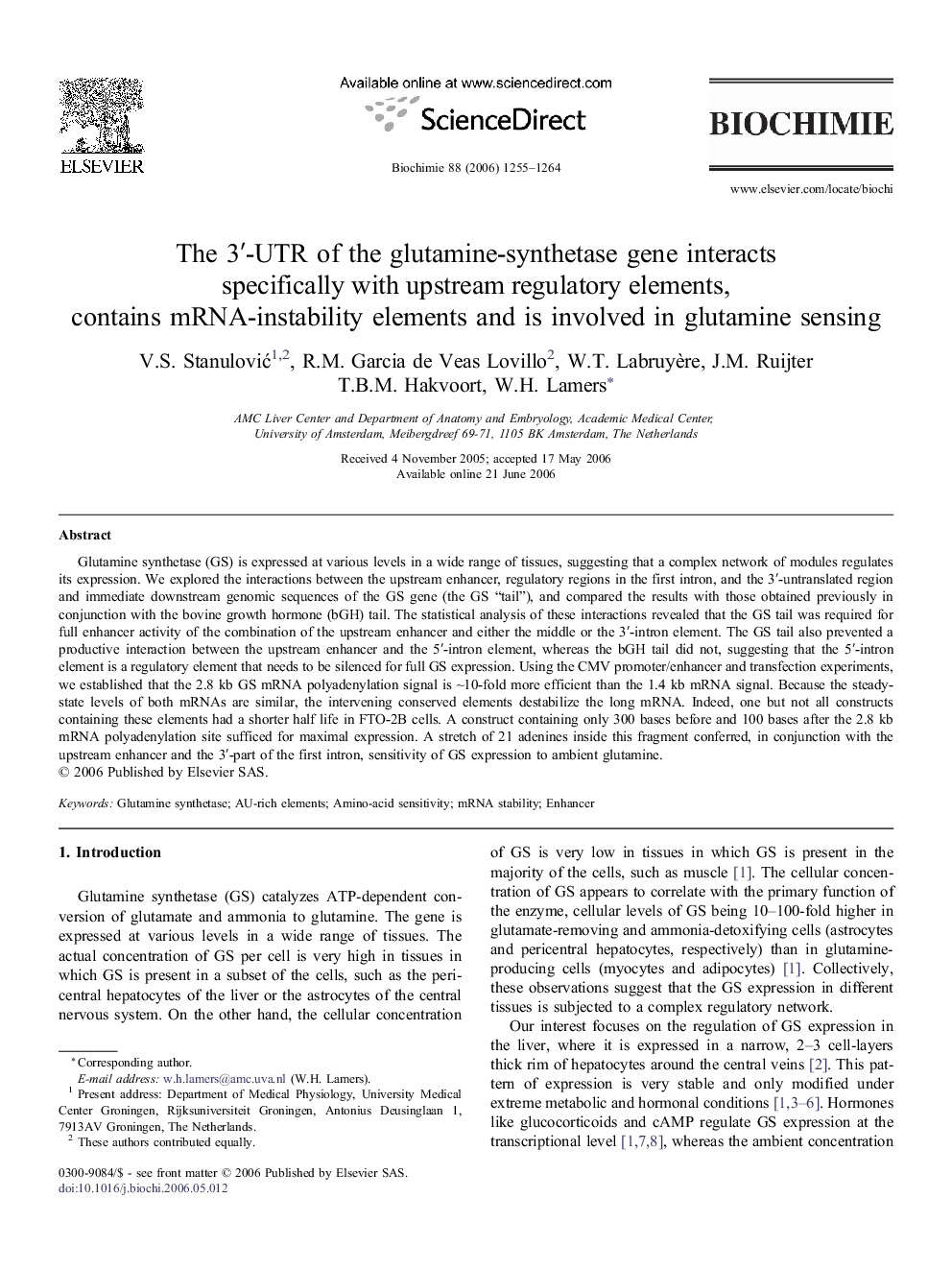| Article ID | Journal | Published Year | Pages | File Type |
|---|---|---|---|---|
| 1953154 | Biochimie | 2006 | 10 Pages |
Glutamine synthetase (GS) is expressed at various levels in a wide range of tissues, suggesting that a complex network of modules regulates its expression. We explored the interactions between the upstream enhancer, regulatory regions in the first intron, and the 3′-untranslated region and immediate downstream genomic sequences of the GS gene (the GS “tail”), and compared the results with those obtained previously in conjunction with the bovine growth hormone (bGH) tail. The statistical analysis of these interactions revealed that the GS tail was required for full enhancer activity of the combination of the upstream enhancer and either the middle or the 3′-intron element. The GS tail also prevented a productive interaction between the upstream enhancer and the 5′-intron element, whereas the bGH tail did not, suggesting that the 5′-intron element is a regulatory element that needs to be silenced for full GS expression. Using the CMV promoter/enhancer and transfection experiments, we established that the 2.8 kb GS mRNA polyadenylation signal is ~10-fold more efficient than the 1.4 kb mRNA signal. Because the steady-state levels of both mRNAs are similar, the intervening conserved elements destabilize the long mRNA. Indeed, one but not all constructs containing these elements had a shorter half life in FTO-2B cells. A construct containing only 300 bases before and 100 bases after the 2.8 kb mRNA polyadenylation site sufficed for maximal expression. A stretch of 21 adenines inside this fragment conferred, in conjunction with the upstream enhancer and the 3′-part of the first intron, sensitivity of GS expression to ambient glutamine.
